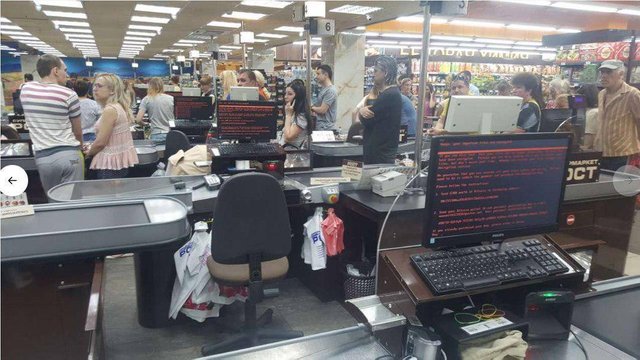From WannaCry to Petya (and why you should use Linux)
From WannaCry to Petya

As with WannaCry
the Petya computer virus mainly affects the most commonly used operating system. The wave of cyber attacks on a global scale that was detected this Tuesday uses a vulnerability of Windows for which Microsoft had already published a security patch. The US company has acknowledged that the first attack was directed at Ukraine.
The virus "uses several techniques for its propagation, including one that has already been addressed in a security update available for any system, from Windows XP to Windows 10, called MS17-010"
Following the previous cyberattack produced by WannaCry in May, Microsoft advised its customers and users to install the MS17-010 patch. The failure and ways to capitalize have already been made known in a series of materials 'hacked' to the US security agency.
However, Microsoft has said it will continue to investigate the problem, while saying that it will take "the necessary measures to protect its customers". Sources from the US firm have cautioned against opening unknown files since such "ransomware" attacks or data hijacking generally use e-mail messages to propagate.
Although the authorship of cyberattack is still unknown, computer security experts believe that the origin lies in Ukraine. The firm Cisco points out that "some infections are related to the accounting software updates" used in that country called MeDoc
In 30 seconds you can infect computer systems around the world
Alejandro Suárez, an expert in the field of new technologies, has confirmed that the cyber attack that affected companies around the world was due to the existence of "a security hole in Windows systems" Which cybercriminals have exploited to "put a virus that is much more sophisticated than the previous one and much less than the next", because it is convinced that attacks of this type will repeat themselves.
Network expert and collaborator of "The Flashlight" warns that software "can be manipulated, modified and replicated in 30 seconds and people around the world take advantage of those gaps to infect systems around the world."
According to Suárez, in Spain there is an important number of critical infrastructures, such as power plants, water control, traffic lights; "We have a high technological dependence", but prepared to repel an attack of this type "we do not have personnel, resources, or budgets to guarantee the protection"
My personal opinion: Use linux, maybe you have heard that linux has been harm by this viruses but that's a mayor lie or a misunderstanding about technology. Linux can run samba servers, it can host the virus but can't be affected by it ... It's like being a carrier of the hiv virus you can infect others but it can't harm you ...
Heard of Petya these few days and really hope to know more about that. Wannacry was indeed very destructive for those Windows users without having their system updated. These kinds of ransomware seem to become more popular in the recent few years and the cyber security specialists should really think of some ways to solve these issues from the root (ya, i know it's not quite possible)
I know, right. Ransomware has become such a lucrative market these past few years!
Small/average sized businesses don't often backup their data and as such have to pay the ransom otherwise they will go out of business.
The solve is to use open source OS, Linux file system structure makes impossible to spread malicious files between Linux machines ... You can not call a virus something that does not spread ...
I don't understand why businesses avoid using Linux systems, they are known to be more secure than windows and surely that's the most important thing for your business, security?
Also, Linux is FREE!
Maybe because we have fail to build an easy to use Desktop Linux Distro ... I love the fact that new Debian has 52.000 packages but what does this mens for the regular Desktop user? Nothing at all ... We need to standardize a simple Distro so they can migrate and sell it as a "Free Virus OS"
All a regular desktop user needs is a fairly simple interface that is built on Linux... the "complexities" of Linux could be buried in the background and as such the regular desktop user wouldn't know any different (unless they wanted to install packages).
let's say you are a regular windows users who switch to linux and want to find an easy tool to change the size of a picture any Linux user would say "Just use Pinta" but you can't say to my wife "Go to the shell update the packages and install" and If they uses Synaptic they would find so many programs that will be confused to know what to install ... We need a Distro with a some standardized, easy to use and ready to go software
Yeah I understand completely, the last thing you want is a windows user even seeing the terminal... It would take some time to achieve this though, i'm guessing a kick starter would be a good first step?
Good post, Thanks for sharing
Samsung Galaxy Note8 renders [EXCLUSIVE]!... https://steemit.com/samsung/@hamzaoui/samsung-galaxy-note8-renders-exclusive